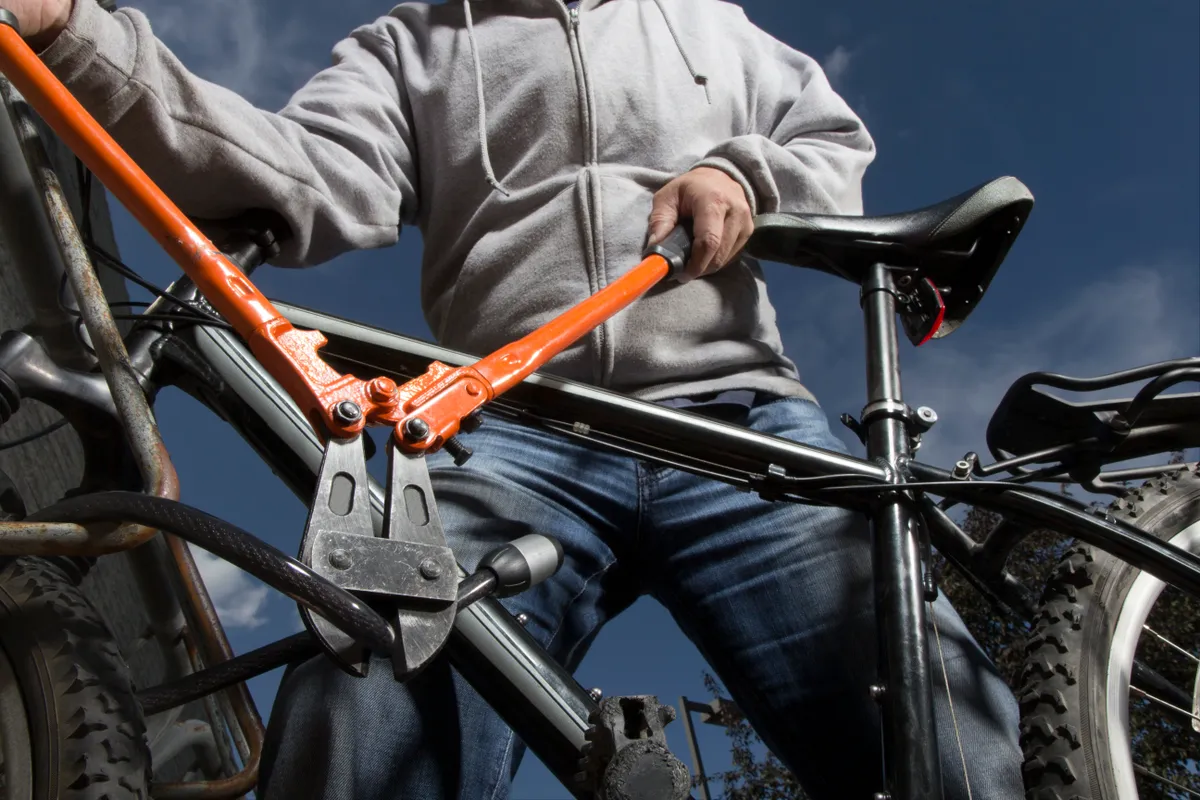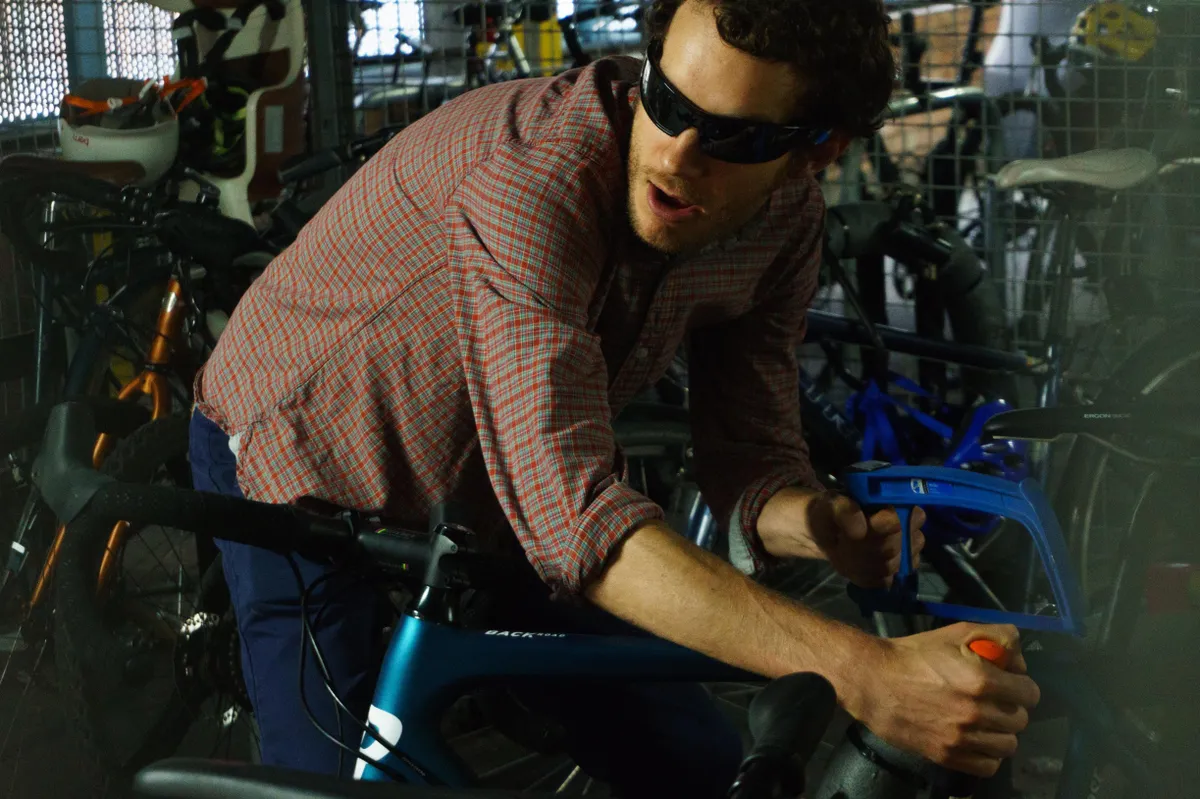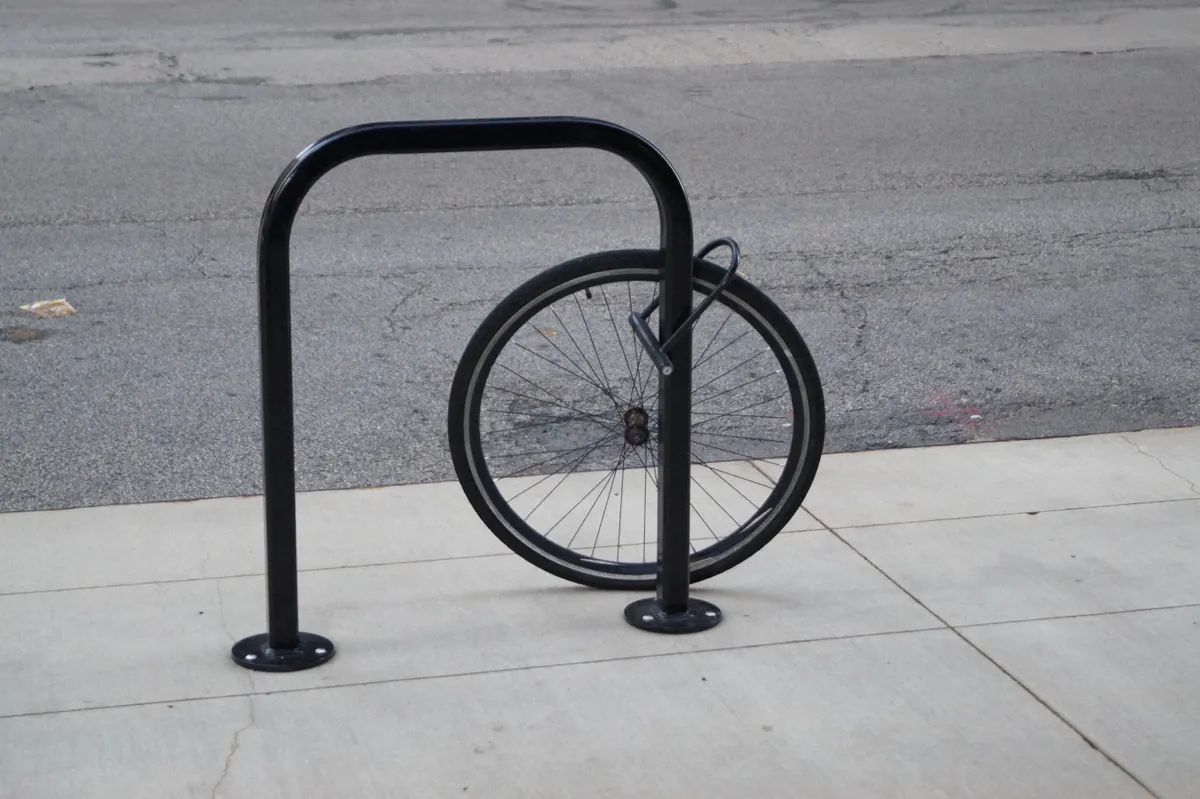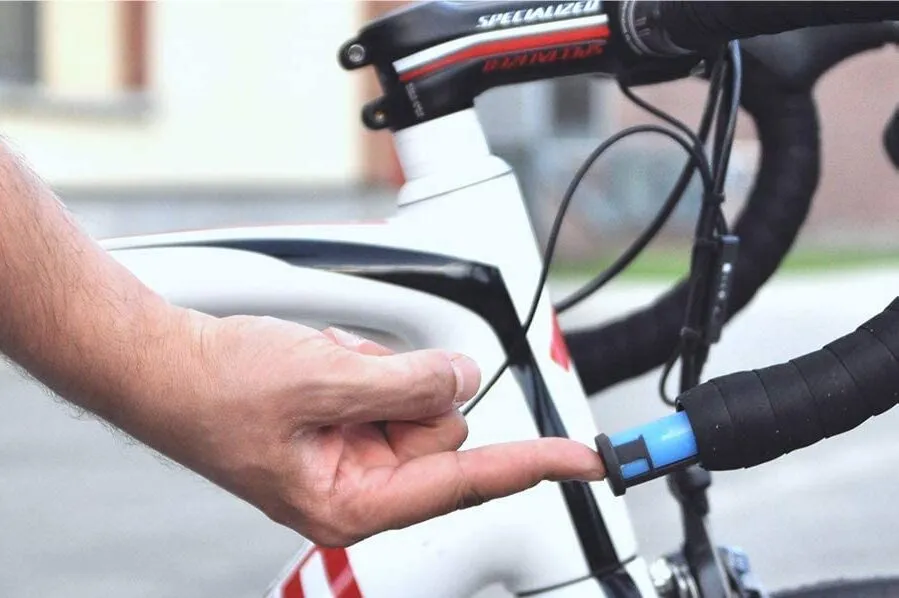Bicycle trackers are an emerging technology that allows riders to locate their bike, usually through a dedicated app.
With thefts unfortunately a sad reality of bicycle ownership, a tracker could help provide some peace of mind – and the means to find your bike – should the worst happen.
In this guide, we’ll take a closer look at what exactly constitutes a bicycle tracker, how they work, where they can fit to your bike and some of the current options available.
What is a bike tracker?

A bike tracker is a typically small device mounted on your bike.
Once installed, you can track the device, generally via the relevant brand’s smartphone app. Many will be able to notify you if it has moved when the bike is unattended – and where it is.
Although it is conceivable a bike thief could remove the tracker, they might not even realise it’s there, given that the latest bike trackers can be fairly sleek and unassuming in their design.
In many examples, you need to pay for a subscription to a brand’s service to use the software associated with the device, although many bundle in a free trial period to sweeten the deal.
Where can you hide a bike tracker?

Bike trackers can be located across various positions on the bike, depending on the model you buy.
Some mount in inconspicuous locations such as under the saddle or around the bottle cage area.
Arguably, the best trackers take things one step further, attempting to make the device close to invisible (for example, by hiding the tracker inside the handlebar).
There are also examples of bike trackers that are left very much on full display, attached with tamper-proof Torx bolts, which should deter a thief from wanting to steal the bike in the first place.
Is a bike tracker worth it?

While prevention is, of course, better than cure, a bike tracker could give you a better chance of being reunited with your bike in the event of it being stolen.
For many riders, that could make a bike tracker a wise investment, particularly if you need to leave your ride in a vulnerable location (for example, if you have to lock it up regularly or store it in a bike shed).
A tracker won’t replace the best bike locks and you still need to make sure you continue to lock your bike properly, as that will always be the best deterrent against theft.
The usefulness of any tracker will also rely on the fact that the thief hasn’t found the device and it’s within range, depending on the model.
Some GPS trackers offer limitless range in theory, but any tracker relying on a Bluetooth connection with your phone – such as the Tile Sticker or Apple Air Tag – will have a much more limited range, restricting the device’s usefulness for cyclists.
Some manufacturers offer connectivity within their respective apps to local authorities, if you have located the bike, so you can take the appropriate action rather than single-handedly confronting the thief.
While the choice of bike trackers is fairly limited at this point in time, as with any emerging technology, there will likely be more considered options in the future.
Better efforts at concealing the tracker, so that it integrates inside your frame, will likely be the biggest advancement, so it is less obvious to a criminal. It is all a balancing act for manufacturers to achieve a sleek, hidden design that can easily emit an accurate signal.
There will also likely be progress in terms of battery life, too. With most current examples, bike trackers represent yet another piece of tech to add to that never-ending list of things you need to remember to charge.
Five bike trackers available to buy today
Sherlock GPS

The Sherlock GPS tracker aims to overcome any sleuthing by potential thieves, giving you possibly the most discreet, bicycle-specific option.
The module is designed to mimic a bar-end plug so it should be virtually undetectable at first sight.
It fits in both flat or drop handlebars, although on drop bars, there needs to be at least 6cm of straight bar – before it curves into the drops– for it to fit into.
The tracker will notify you if the bike has moved when left unattended, via the free-to-download Sherlock app. You can create bike profiles on the app, and include important information such as the make, model and frame number. It has limitless tracking, meaning there is no range restriction, and the location is accurate to 5m.
The Sherlock is charged via a MicroUSB cable and battery life is rated up to a week. You can monitor battery life on the app and it will notify you when a charge is critical. Unlike other devices, the Sherlock has an inbuilt SIM card, allowing it to access mobile networks, just like your phone.
It comes with two years of internet connection at the asking price but from the third year, the subscription costs £2.50 / €3 / $3.50 a month. It is currently available in Europe and the USA.
The Sherlock GPS retails for £139.99 (international pricing TBC).
See.Sense Knowhere

See.Sense is most famous for its smart lights but the Northern Irish company has now added a bike tracker to the range.
The See.Sense Knowhere was formerly known as the See.Sense Air, which was a very successful Kickstarter project. The Knowhere can currently be preordered and looks to improve on the brand’s current platform.
The module can be fitted behind the saddle, attaching to the rails, or underneath a bottle cage.

It boasts a three-month rechargeable battery life and connects to an app that the brand says can send you immediate alerts if the bike moves, as well as providing an accurate GPS location. It weighs 80g and is fitted with tamper-proof Torx bolts.
Pre-order customers will get one year’s free connection per device purchased, with the brand saying that it will cost 3p per day afterwards.
Boomerang CycloTrac V2

The Boomerang differs from other options in that it is strikingly obvious when fitted to your bike. It is a large module that attaches to the down tube via tamper-proof bolts. You’ll need 10in / 25 cm of clearance to fit – if you don’t have that, Boomerang sells additional mounts enabling you to install the unit on the side of your seat tube or on a pannier rack.
Unlike the other trackers discussed here, thieves will likely be deterred from stealing the bike in the first instance, given its blatant presence. The device has multiple sensors and once armed after you have left your bike, it will emit a shrill screech if it detects movement. You’ll then receive a notification if you have preset your phone to link with the device.
The battery life is rated to two months. However, if you have activated its tracking mode, that is reduced to ten hours from a full charge – so if your bike has been stolen, you’ll need to find it quickly.
You receive a free one-year subscription of internet connection and after that, it is $3.99 a month. The CycloTrac retails for £125.85 / $125 / AU$220.12 / €149.97.
Tile Sticker

The Tile Sticker was one of the first trackers on the market, being originally designed not for bikes but for household items such as keys and even pets.
It is a discreet design (measuring 27x7.8mm) and, as you’d expect given the name, the Sticker can be stuck on the bike at your chosen location.
The range, however, is very limited. As the Tile Sticker uses Bluetooth to connect to your smartphone, rather than relaying its location via a GPS signal, this is limited to only 250ft / 76m – a reminder of the Sticker’s original home-use intentions.
It may still have its uses though if you regularly leave your bike in a busy parking facility. Other Tile users can also notify you if the bike is within their range using a feature called ‘Active Community Find’. The non-replaceable battery is rated for up to three years.
The Tile Sticker retails for £24.99 / $29.99 for a one-pack. In Australia and mainland Europe, it is not available to buy as a single unit – only a two or four-pack.
Apple Air Tag

The technology giant waded into the tracking game in April 2021 with the Apple AirTag. Like the Tile, it has not been designed with the bicycle specifically in mind – but it’s certainly an application it can be used for.
You can buy a one or four-pack (if you have multiple bikes or other assets you want to track). The one-pack is £29 / €35 / $29 / AU$45 whereas a set of four will set you back £99 / €119 / $99 / AU $149.
The AirTag can be tracked in the ‘Find My’ app pre-installed on iOS devices, which is very intuitive to use and means you can monitor all your items on one screen.
When you are trying to locate the Air Tag, the tracker will play a sound. If your AirTag is nearby, your iPhone can lead you precisely straight to it with precision finding, thanks to the Ultra Wideband technology.
If you lose the AirTag, you can put it in Lost Mode and when it’s detected, you’ll receive a phone notification. Battery life is rated for up to a year.
